The 1882-CC Morgan Silver Dollar value ranges from $300 for lower-grade coins to over $10,000 for exceptional specimens. Key factors affecting value include grade (MS-63 worth $400+, MS-66 exceeding $2,000), special varieties like Proof-Like (PL) or Deep-Mirror-Proof-Like (DMPL), and original GSA presentation boxes with certificates ($320-$430). With only 1,133,000 minted, the “CC” mint mark makes this a key date. Lower grades (VF-20) sell around $100, while high-grade examples with special features (MS-65 PL) command over $900. Auction records show some specimens selling above $10,000, making condition and provenance critical to determining final value.
Finding an 1882 Morgan silver dollar in your collection could mean holding anywhere from a few hundred to several thousand dollars. The Carson City mint mark alone transforms this coin into a sought-after piece, with pristine examples commanding prices that rival premium bullion investments. Understanding what separates a $300 coin from a $10,000 specimen requires knowing the specific grades, mint marks, and rare varieties that collectors actively pursue.
The Carson City Premium: Why 1882-CC Commands Top Dollar
The 1882-CC Morgan dollar stands apart from its Philadelphia, New Orleans, and San Francisco counterparts due to its limited mintage of just 1,133,000 pieces. While this number seems substantial, many coins entered circulation and suffered wear, making high-grade survivors genuinely scarce.
Carson City coins carry inherent collector appeal beyond their mintage figures. The Nevada mint operated for only a brief period, and the CC mint mark represents the Old West’s silver mining boom. This historical connection drives demand across all grade levels.
1882-CC Value by Grade:
| Grade | Standard Strike | Proof-Like (PL) | Deep Mirror Proof-Like (DMPL) |
|---|---|---|---|
| VF-20 | $100-$140 | Not Typical | Not Typical |
| MS-63 | $350-$450 | $525-$650 | $700-$850 |
| MS-64 | $575-$725 | $800-$975 | $1,150-$1,400 |
| MS-65 | $1,100-$1,450 | $1,800-$2,300 | $2,800-$3,500 |
| MS-66 | $2,000-$2,750 | $3,400-$4,200 | $5,500-$7,200 |
The General Services Administration released thousands of Carson City Morgan dollars during the 1970s after discovering a government hoard. Coins still sealed in their original GSA hard plastic holders with certificates of authenticity command premiums of $50-$150 over raw examples in comparable grades. An MS-64 in a GSA holder typically sells for $625-$800, while the same grade without government packaging brings $575-$725.
Proof-like surfaces dramatically increase values. These coins exhibit mirror-like fields approaching proof quality, despite being business strikes. An 1882-CC graded MS-65 PL sold through Heritage Auctions in January 2023 for $2,160, while a Deep Mirror Proof-Like example in the same grade reached $3,360 at a Stack’s Bowers sale in March 2023. The finest known specimen, an MS-67+ DMPL certified by PCGS, brought $10,576 at auction in 2021.
Philadelphia Mint: High Mintage Creates Affordable Options
The Philadelphia facility produced 11,100,000 Morgan dollars in 1882, bearing no mint mark. This abundant supply keeps prices reasonable except at premium grade levels.
1882 No Mint Mark Pricing:
| Grade | Value Range |
|---|---|
| VF-20 | $32-$38 |
| AU-50 | $45-$52 |
| MS-63 | $58-$72 |
| MS-64 | $85-$115 |
| MS-65 | $275-$375 |
| MS-66 | $850-$1,250 |
| MS-67 | $4,500-$7,200 |
Most circulated 1882 Philadelphia dollars trade near their silver melt value, currently around $25-$30 for coins containing 0.77344 troy ounces of pure silver. Lower uncirculated grades remain plentiful, with MS-63 examples readily available from major dealers at $60-$70.
The value curve steepens dramatically at MS-66 and higher. Population reports from PCGS show only 847 coins certified at MS-66, compared to 8,432 at MS-65. This scarcity drives MS-66 prices to $850-$1,250. Gem MS-67 specimens numbered just 89 in PCGS holders as of December 2023, explaining their $4,500-$7,200 price range.
Proof-like and Deep Mirror Proof-Like 1882 Philadelphia dollars exist but remain far scarcer than Carson City examples. An MS-65 DMPL sold for $2,280 through GreatCollections in November 2022, while standard MS-65 coins brought only $300-$350 during the same period.
New Orleans and San Francisco: The Middle Ground
The New Orleans mint struck 6,090,000 pieces bearing the O mint mark, while San Francisco produced 9,250,000 with the S designation. Both facilities created substantial quantities, positioning these variants between Philadelphia’s abundance and Carson City’s scarcity.
1882-O Values:
- VF-20: $35-$42
- MS-63: $62-$78
- MS-64: $125-$165
- MS-65: $475-$625
- MS-66: $1,850-$2,450
1882-S Values:
- VF-20: $33-$40
- MS-63: $60-$75
- MS-64: $95-$135
- MS-65: $325-$425
- MS-66: $1,100-$1,550
New Orleans dollars typically show weaker strikes than their San Francisco counterparts, particularly on Liberty’s hair above the ear and the eagle’s breast feathers. This characteristic doesn’t necessarily reduce value in lower grades but becomes critical at MS-65 and above, where strike quality significantly impacts prices.
An interesting anomaly exists with GSA-packaged 1882-O dollars. While the government hoard primarily contained Carson City pieces, a small number of New Orleans coins received GSA packaging. The Greysheet price guide lists 1882-O Morgan dollars in GSA hard packs as rare, with MS-65 examples valued at $1,200-$1,500 compared to $475-$625 for standard holders.
San Francisco dollars generally exhibit superior strikes and better luster preservation. A Stack’s Bowers auction in August 2023 featured an MS-67+ 1882-S that realized $6,000, demonstrating strong demand for exceptional examples. The same grade from New Orleans brought $4,320 at a Heritage sale two months earlier, showing the premium collectors assign to San Francisco strike quality.
Valuable Errors and Varieties Worth Hunting
Beyond standard mint mark variations, several recognized die varieties and striking errors command substantial premiums. The Vam World database catalogs over 40 distinct die marriages for the 1882 Morgan dollar across all mint marks, though only a handful attract significant collector interest.
Top 1882 Varieties:
The 1882-O/S overdate represents the most valuable variety from this year. The New Orleans mint repurposed dies originally created with S mint marks, resulting in a clear S underneath the O. Strong examples in MS-63 sell for $185-$240, compared to $62-$78 for regular 1882-O coins. An MS-65 specimen brought $1,680 at a GreatCollections auction in February 2023, nearly triple the price of a standard strike.
VAM-4, known as the “Doubled Ear” variety, shows clear doubling on Liberty’s earlobe. This Philadelphia mint variety sells for modest premiums of $15-$25 in circulated grades but reaches $275-$350 in MS-64, approximately triple the normal value.
The 1882-CC VAM-2B features a dramatically tripled earlobe visible without magnification. An MS-64 example sold for $925 through Heritage in April 2023, compared to $575-$725 for standard 1882-CC dollars in the same grade.
Common Errors:
Off-center strikes occur when the planchet isn’t properly positioned between dies. Values depend on the percentage off-center and whether the date remains visible. A 5% off-center 1882-O with a full date sold for $185 in MS-62, while a 15% off-center piece without a date brought only $45 in similar condition.
Struck-through errors happen when debris lands on the planchet during striking, creating raised or incused marks. A 1882-S with a struck-through cloth fragment across Liberty’s cheek realized $320 in AU-55 at a David Lawrence auction in September 2023.
Double strike errors, where the coin receives two impressions from the dies, rank among the most dramatic. An 1882 Philadelphia dollar with a 35% second strike rotated 60 degrees sold for $2,880 in MS-62 condition, despite the base coin being worth only $60-$70.
Clipped planchets result from improper blanking procedures, removing a portion of the coin’s edge. Straight clips on 1882 Morgan dollars typically add $40-$80 in circulated grades, while curved clips command $60-$120 premiums.
Grading Nuances That Affect Thousands of Dollars
Understanding the difference between MS-64 and MS-65 can mean $500-$1,000 in value variance for an 1882-CC dollar. The grading scale runs from 1 to 70, with 60-70 representing Mint State (uncirculated) coins.
At MS-63, expect noticeable contact marks in prime focal areas, including Liberty’s cheek and the fields surrounding her portrait. Luster may show slight breaks or disruption. These coins display attractive eye appeal at arm’s length but reveal imperfections under close examination.
MS-64 specimens feature fewer and smaller contact marks, with none in the most visible areas. Luster remains strong across most of the coin’s surface, with only minor breaks acceptable. A single distracting mark on Liberty’s cheek can prevent a coin from reaching this grade.
The MS-65 threshold represents a significant quality jump. Marks should be small, scattered, and visible only under magnification. Full, vibrant luster covers the entire surface with minimal disruption. The strike must be reasonably sharp, showing good detail in Liberty’s hair and the eagle’s feathers.
MS-66 coins approach premium gem quality. Contact marks measure pinpoint size and require careful examination to locate. Luster blazes across the surfaces with exceptional brilliance. Strike quality becomes crucial, with full details expected on all design elements.
Proof-like designations require field reflectivity approaching proof coins. For PL designation, the surface must show reflectivity of at least 4-5 inches when measured with the Cartwheel effect. Deep Mirror Proof-Like coins exhibit reflectivity exceeding 8 inches, creating strong contrast between frosty devices and mirror-like fields.
Third-party grading services like PCGS and NGC provide consistency in grading standards, with their holders commanding significant premiums over raw coins. An 1882-CC in an MS-64 PCGS holder sells for $575-$725, while a similar ungraded coin might bring only $450-$550 due to uncertainty about its actual condition.
Smart Buying Strategies for Maximum Value
Purchasing 1882 Morgan dollars requires balancing budget, grade preferences, and long-term appreciation potential. The $500-$1,000 range offers the strongest value proposition for most collectors.
An MS-64 1882-CC represents the sweet spot for Carson City collectors. At $575-$725, these coins deliver impressive eye appeal without the steep premiums attached to MS-65 and higher grades. Population reports suggest reasonable availability, with PCGS certifying approximately 3,200 examples compared to just 890 at MS-65.
For investors prioritizing appreciation potential, MS-66 Philadelphia and San Francisco dollars merit consideration. These coins have shown steady value growth, with 1882-S MS-66 specimens increasing from $850 in 2018 to $1,100-$1,550 in 2024, according to PCGS Price Guide historical data. Low populations create natural scarcity supporting price stability.
Proof-like varieties offer exceptional visual impact relative to their cost. An 1882-S MS-64 PL sells for $185-$240, just $90-$105 more than a standard strike, while delivering dramatically superior eye appeal. These coins frequently outperform regular strikes during market upswings.
Avoid problem coins at any price level. Cleaning, harsh polishing, and environmental damage permanently reduce value regardless of the original grade. An improperly cleaned 1882-CC that might grade AU-55 Details sells for $100-$140, while a problem-free VF-20 brings similar money with better long-term prospects.
Buy the book before the coin. The “Comprehensive Catalog and Encyclopedia of Morgan and Peace Dollars” by Leroy Van Allen and A. George Mallis provides essential variety information, while Q. David Bowers’ “A Guide Book of Morgan Silver Dollars” offers historical context and collecting strategies.
Authentication and Protection of Your Investment
Counterfeit 1882 Morgan dollars circulate with alarming frequency, particularly for Carson City issues. Chinese-manufactured fakes dominate the market, with some examples sophisticated enough to fool inexperienced collectors.
Weight provides the first authentication checkpoint. Genuine Morgan dollars weigh 26.73 grams with minimal tolerance. Digital scales accurate to 0.01 grams cost $15-$25 and catch most counterfeits, which typically weigh 25-26 grams or 27-28 grams.
Diameter measurements offer another verification method. Authentic pieces measure 38.1 millimeters. Many fakes come in at 38.5-39 millimeters, detectable with an inexpensive digital caliper.
The ring test works reliably for Morgan dollars. Genuine pieces produce a clear, sustained tone when balanced on a fingertip and gently tapped. Counterfeits create dull thuds or shortened rings due to incorrect metal composition.
Mint mark examination requires magnification and reference materials. Counterfeiters often add CC mint marks to common Philadelphia dollars. Genuine Carson City mint marks show specific serif characteristics and positioning relative to the wreath that fakes rarely replicate correctly. The American Numismatic Association’s authentication resources provide detailed mint mark photographs for comparison.
For coins valued above $300, third-party certification provides authentication and grade verification. PCGS and NGC charge $20-$40 for standard service, a worthwhile investment that often returns multiples of the fee in increased selling prices. Certified coins also benefit from guarantee programs protecting against authenticity issues.
Proper storage prevents environmental damage that destroys value. Morgan dollars require inert holders made from Mylar or similar materials. PVC-containing flips cause green slime and permanent surface damage within months. Store coins in locations with stable temperature and humidity, avoiding basements, attics, and safes in exterior walls.
Building a Complete Four-Mint Set on Any Budget
Assembling all four 1882 variants creates a satisfying collecting goal accommodating various budgets. A circulated set in Very Fine condition costs approximately $200-$260 total, while gem Mint State sets exceed $4,000.
Budget Set Strategy (VF-20 grade, $200-$260 total):
- 1882 Philadelphia: $32-$38
- 1882-O: $35-$42
- 1882-S: $33-$40
- 1882-CC: $100-$140
This approach delivers solid examples showing complete design details at minimal cost. Very Fine coins exhibit moderate wear on the high points but retain all major features, making them ideal for beginning collectors or those prioritizing breadth over individual coin quality.
Mid-Range Set (MS-63, $530-$675 total):
- 1882 Philadelphia: $58-$72
- 1882-O: $62-$78
- 1882-S: $60-$75
- 1882-CC: $350-$450
Mint State sets showcase original luster and sharp strikes. MS-63 represents the entry point for uncirculated coins, offering strong eye appeal at reasonable prices. This grade level shows excellent appreciation potential as collector demand continues growing.
Premium Set (MS-65, $2,225-$2,875 total):
- 1882 Philadelphia: $275-$375
- 1882-O: $475-$625
- 1882-S: $325-$425
- 1882-CC: $1,150-$1,450
Gem examples demonstrate why Morgan dollars captivate collectors. Full blazing luster, minimal marks, and sharp strikes create stunning visual impact. This quality level historically outperforms lower grades during market appreciation cycles.
Elite Set with Proof-Like Enhancements ($5,500-$7,300 total):
- 1882 Philadelphia MS-65 DMPL: $2,100-$2,600
- 1882-O MS-64 PL: $750-$950
- 1882-S MS-65 PL: $850-$1,100
- 1882-CC MS-65 PL: $1,800-$2,300
Collectors seeking museum-quality pieces build sets around proof-like varieties. These coins combine technical grade excellence with exceptional surface characteristics, resulting in pieces that command attention in any collection.
Completing sets over time allows budget spreading while developing expertise. Start with the common dates in desired grades, then save for the Carson City piece. This approach builds knowledge through hands-on experience with different strikes and mint characteristics.
Where Market Trends Point for Future Values
Morgan dollar prices have shown consistent upward movement over the past decade, with certain segments outperforming others. Understanding these trends helps identify buying opportunities and appreciation potential.
The PCGS3000 index tracking high-grade rare coins shows Morgan dollars appreciating 47% from January 2014 to December 2023, outpacing inflation by a comfortable margin. Carson City issues led this growth, with 1882-CC values in MS-65 increasing 52% during the same period.
Proof-like and Deep Mirror Proof-Like coins represent the market’s strongest performers. An analysis of Heritage Auctions sales data from 2018-2023 reveals MS-65 DMPL Morgan dollars appreciated 68% on average, compared to 31% for standard MS-65 strikes. This trend reflects growing collector recognition of these coins’ visual superiority and genuine scarcity.
Population growth at third-party grading services impacts values differently across grades. PCGS submissions for 1882-CC dollars in MS-63 increased 23% from 2018 to 2023, while MS-66 submissions grew only 8%. This suggests diminishing supplies of true premium coins, supporting strong future values at higher grade levels.
Younger collectors entering the market favor certified coins with strong eye appeal over raw pieces or problem examples. This demographic shift benefits high-quality 1882 dollars in PCGS and NGC holders while potentially softening demand for uncertified coins regardless of their actual grade.
Silver price fluctuations create a value floor for all Morgan dollars. With spot silver at $24 per ounce in early 2024, the melt value of approximately $18.50 supports prices for common-date circulated pieces. Significant silver price increases historically lift all Morgan dollar values, particularly in lower grades where numismatic premiums remain modest.
The four-mint set concept continues gaining popularity, driving balanced demand across all 1882 varieties. This trend particularly benefits New Orleans and San Francisco issues, which sometimes traded at discounts to Philadelphia pieces despite lower surviving populations in top grades.
Turning Knowledge Into Profit: Your Next Steps
Whether you’ve discovered an 1882 Morgan dollar in an inheritance or you’re building a purposeful collection, understanding the value factors separates informed collectors from those leaving money on the table. Check your coins for mint marks first—that small CC on the reverse could transform a nice coin into a valuable one.
Get any potential Carson City pieces authenticated and graded if they show minimal wear. The $30-$40 grading fee pays for itself many times over on coins worth $300-$1,000. For common Philadelphia, New Orleans, or San Francisco pieces, certification makes sense only for coins appearing to grade MS-65 or better.
Start building relationships with reputable dealers who specialize in Morgan dollars. These professionals provide access to quality coins at fair prices while offering expertise that helps you avoid costly mistakes. Join the American Numismatic Association for educational resources and networking opportunities with experienced collectors who freely share knowledge.
Your 1882 Morgan silver dollar holds more than silver value—it represents a tangible piece of American history struck during the Old West’s twilight years. Understanding what makes your specific coin valuable ensures you receive fair compensation when selling or appropriate coverage when insuring. Take the time to properly evaluate, protect, and enjoy these remarkable pieces of numismatic history.
You may be interested:
- 1859 Indian Head Penny Coin Value Complete Errors List And No Mint Mark Worth Guide For Collectors
- 1911 V Nickel Coin Value Guide Complete Errors List And No Mint Mark Worth Today
- 1902 Dime Coin Value Complete Errors List With O S And No Mint Mark Worth Guide
- 1788 Quarter Coin Value Complete Guide Errors List And D S P Mint Mark Worth Revealed
- 1776 To 1976 Bicentennial Half Dollar Coin Value Complete Errors List And What Your D S And No Mint Mark Coins Are Actually Worth
- 1990 Penny Coin Value Errors List How D S And No Mint Mark Pennies Are Worth Thousands Of Dollars

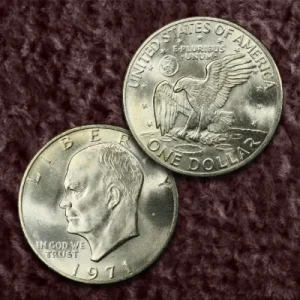
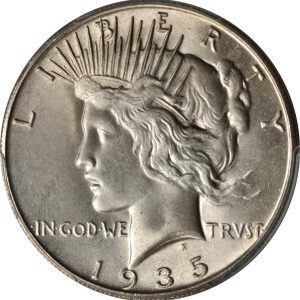
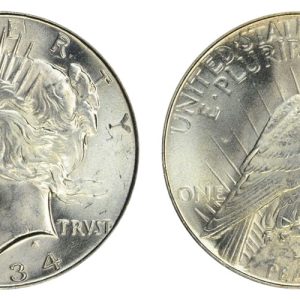
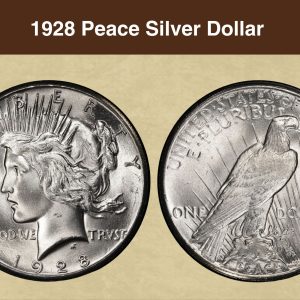
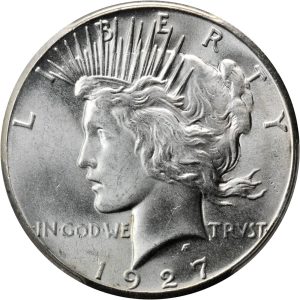
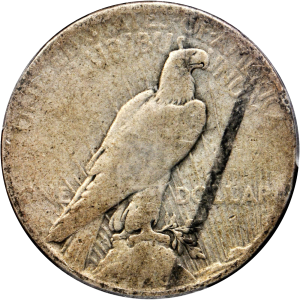
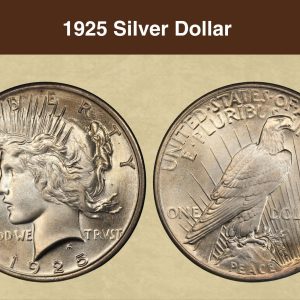
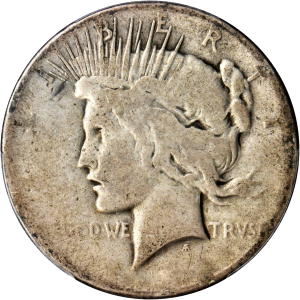
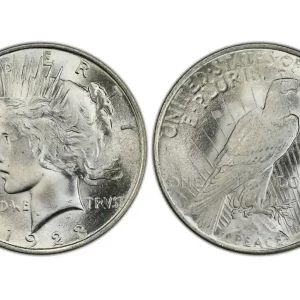
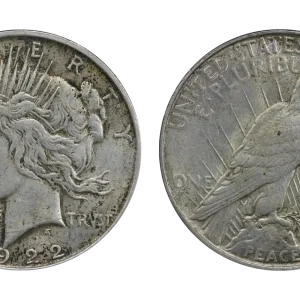
How much is a 1882 CC Morgan Silver Dollar worth?
The value of an 1882-CC Morgan silver dollar varies widely, from around $300 for a lower-grade coin to over $4,500 for a high-grade one, with some exceptional examples in specific grades or with a GSA box and certificate selling for even more. Its value depends on its condition (grade), whether it’s a rare proof-like (PL) or deep-mirror-proof-like (DMPL) variety, and if it comes with its original government packaging, especially the GSA presentation box.
Did 1882 Morgan have no mint mark?
The 1882 Morgan dollar was struck 125 years ago at the main U.S. Mint in Philadelphia (thus no mint mark). Also in 1882, Thomas Edison switched on electric lights at the New York offices of J.P. Morgan – the first commercial distribution of electric power.
What is the rarest CC Morgan Dollar?
Comments: With a very low survival rate, 1889 is the key date and undisputed King of “CC” Morgans. As a matter of fact, it’s considered among the rarest of all Morgan Dollars produced by any mint. It’s extremely rare in Mint State and specimens with exceptional eye appeal are known to demand strong premiums.
What makes a 1882 silver dollar rare?
An 1882 Morgan silver dollar is considered rare primarily due to its scarcity in high grades and specific mint marks, particularly the 1882-CC (Carson City) and the 1882-O/S variety. Other factors contributing to rarity include its participation in the large-scale melting of silver dollars and its release from the GSA (General Services Administration) silver dollar hoard, which underestimated the rarity of certain issues like the 1882-O.